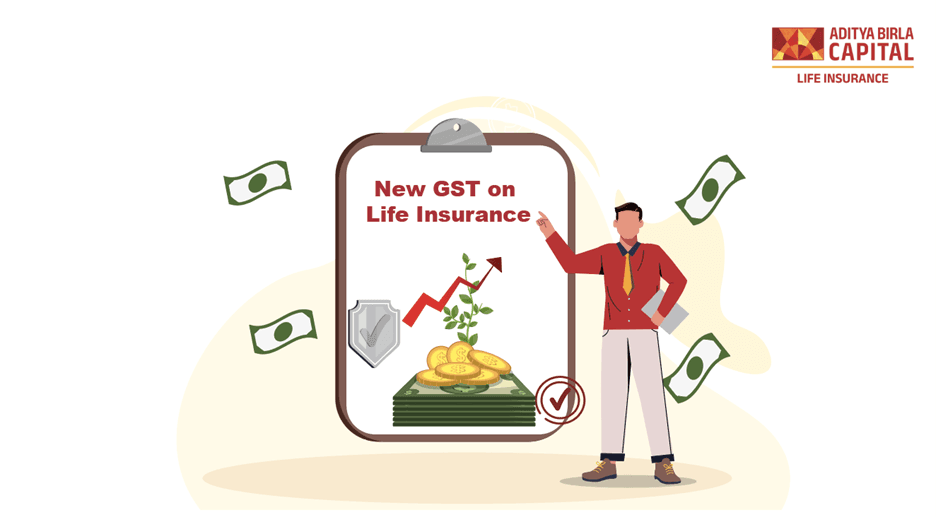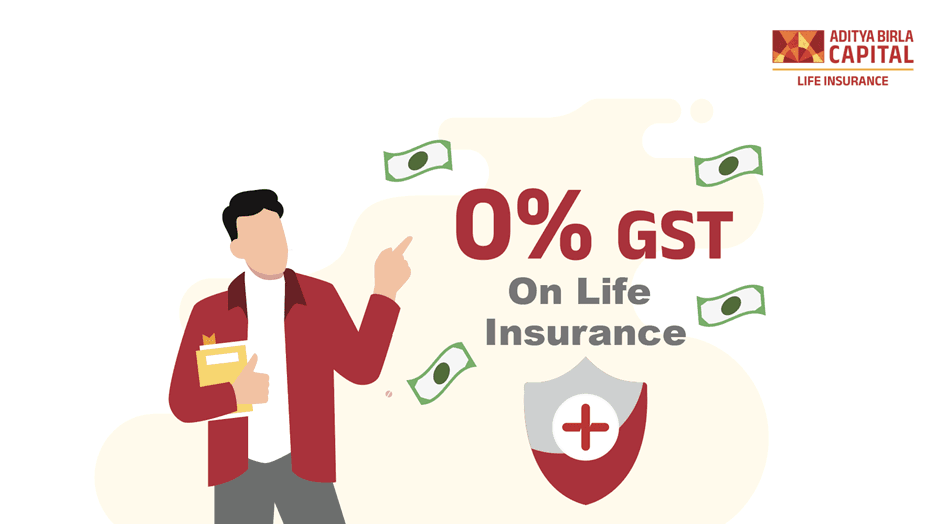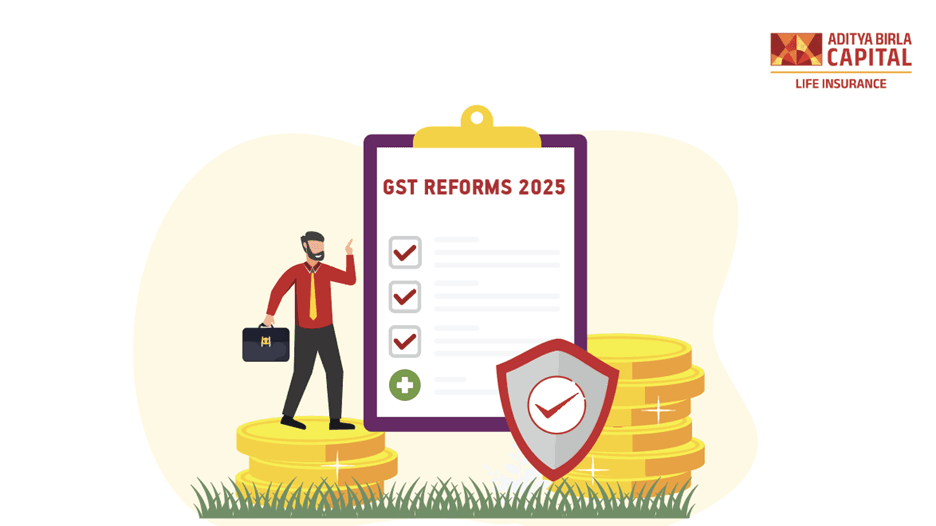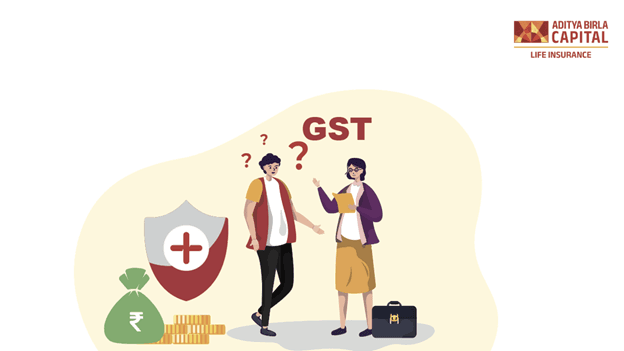For years, term insurance was considered the most affordable way to secure your family’s future. But there was always one part of the cost that had nothing to do with the protection itself, 18% GST on premiums.
Whether you bought a ₹1 crore policy or a simple ₹25 lakh plan, that extra tax made your premium heavier, especially for middle-class families.
Everything changed on 22 September 2025, when the GST Council introduced sweeping reforms to make insurance simpler, cheaper, and more accessible. Among the most impactful decisions was the complete removal of GST on term insurance.
These GST reforms on term insurance have transformed how India approaches life protection, turning a once-taxed product into a tax-free essential.
Understanding the GST Reforms on Term Insurance
At the 56th GST Council Meeting, the government announced that life and health insurance policies will no longer attract GST.
That means from 22 September 2025, all term insurance premiums are GST-free.
Let’s look at what’s changed in simple terms:
| Aspect | Before 22 Sept 2025 | After 22 Sept 2025 |
|---|
| GST on Term Premiums | 18% | 0% |
| Policy Cost | ₹10,000 + ₹1,800 GST = ₹11,800 | ₹10,000 flat |
| Coverage | Same | Same |
| Transparency | Tax included in premium | Clear, one-price model |
| Affordability | Moderate | Significantly higher affordability |
Now, every rupee you pay goes directly toward protecting your loved ones, not toward taxes.
Why the GST Reforms Were Introduced
The government’s move to remove GST from term insurance premiums was guided by a simple objective, to make financial protection affordable for all Indians.
Here’s the reasoning behind this reform:
-
To Boost Insurance Penetration
Despite India being home to over 1.4 billion people, less than 4% of the population has life insurance. The high GST rate was one of the major deterrents for first-time buyers.
By removing GST, the government hopes to expand coverage to millions of new households.
-
To Support the “Insurance for All by 2047” Vision
The IRDAI and central government aim to ensure that every Indian family has at least one life and health insurance policy by 2047. Making term insurance tax-free aligns perfectly with that goal.
-
To Ease the Financial Burden on Families
With inflation, rising EMIs, and healthcare costs, families often postpone buying term insurance. Eliminating GST helps reduce the upfront and renewal burden.
-
To Simplify Compliance and Pricing
Earlier, insurance companies had to apply varying GST rates depending on product type and policy structure. The new reforms simplify this system completely, ensuring transparent and uniform pricing.
The 18% to 0% Transition: What It Means in Practice
Before the reform, a 30-year-old buying a ₹1 crore term plan for ₹10,000 per year would pay ₹11,800 including GST.
Now, the same policy costs ₹10,000 flat.
That’s an instant saving of ₹1,800 per year, or ₹54,000 saved over 30 years, excluding any investment growth on that amount.
For families managing multiple insurance policies, the combined savings can be substantial, freeing up money that can go toward investments, children’s education, or emergency funds.
Impact of the GST Reforms on Term Insurance Buyers
The reform affects both new and existing policyholders in meaningful ways.
-
Lower Premiums for Everyone
Whether you’re buying your first term plan or renewing an existing one, your cost is now up to 18% lower.
-
Higher Coverage for the Same Budget
You can now use the same annual budget to buy more coverage. For instance, a premium of ₹15,000 that previously bought ₹50 lakh coverage can now buy nearly ₹60 lakh.
-
Easier Renewals
Renewals are cheaper and simpler, reducing the number of policy lapses caused by affordability issues.
-
Simpler Premium Breakdown
Your invoice no longer has multiple lines or confusing tax components. The new structure is transparent and easy to understand.
-
More Families Covered
Lower entry barriers mean more households, particularly in Tier 2 and Tier 3 cities, will now be able to afford essential protection.
How the Reform Benefits Existing Policyholders
If you already own a term policy, you’ll automatically benefit from these changes.
- No Re-application Needed: Your insurer will revise the renewal premium to reflect 0% GST.
- Immediate Cost Reduction: From your next payment cycle after 22 September 2025, you’ll see the revised premium.
- Option to Upgrade: You can increase your sum assured or add riders using the amount you save from GST removal.
- Better Long-Term Affordability: Lower costs reduce the likelihood of policy lapse due to financial strain.
Impact on the Insurance Industry
While the reforms are designed to help consumers, they also strengthen the insurance ecosystem.
-
Surge in Policy Sales
Lower premiums make term plans appealing to a much wider audience. Early data already suggests an uptick in new policy enquiries.
-
Improved Retention Rates
Cheaper renewals ensure fewer lapsed policies, which benefits insurers with more consistent premium inflows.
-
Simplified Administration
With a uniform tax rate (0%), insurers can simplify internal systems, reduce administrative costs, and focus on customer experience.
-
Greater Financial Awareness
The reform has sparked renewed conversations about protection and financial security, encouraging more Indians to view insurance as essential.
Comparing Before and After the GST Reform
| Feature | Before GST Reform | After GST Reform |
|---|
| GST Rate | 18% | 0% |
| Annual Premium (₹1 Cr Cover) | ₹11,800 | ₹10,000 |
| Riders (Critical Illness, Accidental Death) | Taxed | Tax-free |
| Renewal Process | Complex | Simplified |
| Customer Affordability | Moderate | Strong |
| Policy Adoption Rate | Limited | Rapid Growth Expected |
This transformation turns insurance from a discretionary product into a basic financial right.
How the Reforms Support the Government’s Larger Goals
The GST reforms on term insurance are a key part of India’s broader financial and social framework.
- Financial Inclusion: More affordable protection for every income group.
- Economic Stability: More insured citizens reduce the risk of financial crises caused by sudden losses.
- Healthcare Access: Families can allocate saved funds toward health or wellness needs.
- Employment Growth: A growing insurance sector creates more advisory and digital service jobs.
- Nationwide Risk Mitigation: Widespread insurance coverage strengthens the social safety net.
Why This Reform Is a Game-Changer for Term Insurance
-
It Removes Psychological Barriers
For many, the thought of paying extra tax on something meant to protect felt unfair. Removing GST changes that mindset, insurance now feels like a right, not a burden.
-
It Encourages Early Protection
Younger buyers, who often hesitate to commit, now find term plans easier to fit within their monthly budgets.
-
It Rewards Financial Responsibility
Families who’ve already been investing in protection see immediate monetary relief, reinforcing their trust in the system.
-
It Supports Long-Term Security
Affordable renewals encourage people to stay insured for decades, building intergenerational financial stability.
Real-World Example: How Much You Save
Consider Rohan, a 32-year-old IT professional, buying a ₹1 crore term plan.
| Yearly Premium (Before Reform) | ₹11,800 (including GST) |
| Yearly Premium (After Reform) | ₹10,000 |
| Annual Savings | ₹1,800 |
| Total Savings over 30 Years | ₹54,000 |
If Rohan invests this ₹1,800 per year at an average return of 7%, he could accumulate over ₹1.4 lakh by the end of his policy term, simply from the GST reform.
How Riders Benefit from GST Reforms
Before the reform, riders like Critical Illness, Waiver of Premium, or Accidental Death Benefit attracted GST as well. Now, these add-ons are fully exempt, making comprehensive coverage easier to afford.
Example:
- A ₹2,000 critical illness rider earlier cost ₹2,360 after tax.
- Now, it costs exactly ₹2,000.
This encourages more people to add these essential riders, strengthening their protection.
Wider Economic and Social Impact
-
Strengthening India’s Safety Net
With more families covered, the financial impact of unforeseen deaths or illnesses on dependents decreases.
-
Encouraging a Culture of Protection
Insurance becomes a household norm, not an optional extra.
-
Channeling Savings Into Growth
The money saved from lower premiums can be reinvested into the economy via mutual funds, fixed deposits, or savings plans.
-
Supporting Rural and Semi-Urban Growth
As affordability improves, insurers can expand deeper into rural markets, bridging India’s protection gap.
What Term Insurance Buyers Should Do Now
If you’re planning to buy or renew your term plan, this is the ideal time to act. Here’s how you can make the most of the GST reforms.
- Review Your Current Premiums: Ensure that your insurer has updated your policy to reflect the 0% GST rate.
- Upgrade Your Coverage: Use the savings to increase your sum assured for better financial security.
- Add Riders: Strengthen your plan with health-related or accidental riders, now available at lower cost.
- Start Early: The younger you are when you buy, the lower your base premium, and now, there’s no tax burden either.
- Encourage Family Members: Spread awareness so others can also benefit from affordable protection.
Looking Ahead: The Future of Term Insurance in India
The GST reforms mark the beginning of a more inclusive and transparent insurance environment. Here’s what’s expected next:
- Digital Acceleration: More people will purchase and renew policies online due to simplified pricing.
- Product Innovation: Insurers will design flexible, low-cost plans suited to younger and rural customers.
- Increased Awareness Campaigns: The industry will focus on financial literacy to reach underserved audiences.
- Public-Private Synergy: Government and private insurers will collaborate to ensure universal protection.
These trends position India’s insurance market for unprecedented growth over the next decade.
A Human Perspective: What This Means for Families
For every statistic, there’s a story, a parent ensuring their children’s dreams stay safe, a young couple protecting each other’s future, or a son securing his ageing parents.
The GST reforms may seem like a technical policy change, but for millions of Indian families, it’s deeply personal.
- It means peace of mind without added cost.
- It means planning for the future feels achievable again.
- It means protection is no longer a privilege, it’s within everyone’s reach.
Final Thoughts
The GST reforms on term insurance are among the most impactful financial decisions in recent history. By reducing the GST rate from 18% to 0%, the government has made life protection simpler, cheaper, and fairer.
For individuals, it means instant savings and long-term security.
For insurers, it means inclusion and growth.
And for India, it means progress toward a financially resilient society.
If you’ve been waiting to buy a term plan or renew your coverage, there’s no better time. Because from now on, every rupee you pay secures your family’s future, not the government’s tax ledger.









